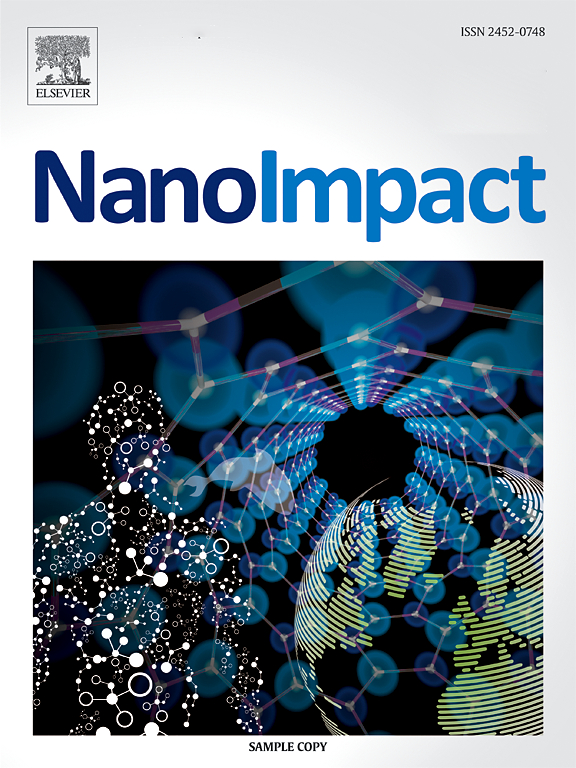CdTe quantum dots induce apoptosis in RSC96 cells by disrupting calcium homeostasis and triggering subcellular structural dysfunction
IF 5.5
3区 环境科学与生态学
Q2 ENVIRONMENTAL SCIENCES
引用次数: 0
Abstract
The toxic effects at the subcellular level of RSC96 cells after CdTe QDs exposure was still unclear. Meanwhile, whether the two classical mechanisms, oxidative stress and calcium ion overload, were involved in CdTe QDs-induced subcellular structural and functional dysfunction of RSC96 cells, which ultimately triggered cell death, remained to be verified. This research focused on the study of CdTe QDs exposure-induced oxidative stress in RSC96 cells, as well as the changes in intracellular calcium ion levels and intra-mitochondrial calcium ion levels. The subcellular structural and functional impairments of RSC96 cells induced by CdTe QDs exposure and the correlation of these impairments were further explored. In addition, the role of antioxidants and calcium chelators in maintaining RSC96 cell homeostasis under CdTe QDs exposure was also investigated. The results showed that 0–80 μM CdTe QDs exposure for 24 h induced oxidative stress and elevated Ca2+ concentration in RSC96 cells, which further caused endoplasmic reticulum expansion and mitochondria structural damage such as rupture of mitochondrial cristae and disappearance of cristae. Exposure to CdTe QDs in RSC96 cells induced endoplasmic reticulum stress and mitochondrial impairment, characterized by enhanced production of mtROS and a notable reduction in mitochondrial membrane potential. Intracellular Ca2+ overload and elevated mtROS concentration in mitochondria were closely associated with mitochondrial dysfunction and cell death triggered by exposure to CdTe QDs. Preincorporation of Mito-TEMPO mitigated the apoptosis rate of RSC96 cells and up-regulated the cellular ATP synthesizing capacity. Preincorporation of the Ca2+ chelator BAPTA-AM partially restored the cellular mitochondrial membrane potential, while decreasing the apoptosis rate of RSC96 cells.

CdTe量子点通过破坏钙稳态和触发亚细胞结构功能障碍诱导RSC96细胞凋亡
CdTe量子点暴露对RSC96细胞亚细胞水平的毒性作用尚不清楚。同时,氧化应激和钙离子过载这两种经典机制是否参与CdTe qds诱导的RSC96细胞亚细胞结构和功能功能障碍,并最终引发细胞死亡,仍有待验证。本研究重点研究CdTe QDs暴露诱导的RSC96细胞氧化应激,以及细胞内钙离子水平和线粒体内钙离子水平的变化。进一步探讨CdTe量子点暴露对RSC96细胞亚细胞结构和功能的损伤及其相关性。此外,还研究了抗氧化剂和钙螯合剂在CdTe量子点暴露下维持RSC96细胞稳态的作用。结果表明,0-80 μM CdTe QDs暴露24 h可引起RSC96细胞氧化应激和Ca2+浓度升高,进一步引起内质网扩张和线粒体嵴断裂、嵴消失等线粒体结构损伤。暴露于CdTe QDs的RSC96细胞诱导内质网应激和线粒体损伤,其特征是mtROS的产生增加和线粒体膜电位的显著降低。细胞内Ca2+超载和线粒体中mtROS浓度升高与暴露于CdTe QDs引发的线粒体功能障碍和细胞死亡密切相关。预掺入Mito-TEMPO可降低RSC96细胞的凋亡率,上调细胞ATP合成能力。Ca2+螯合剂BAPTA-AM的预掺入部分恢复了线粒体膜电位,同时降低了RSC96细胞的凋亡率。
本文章由计算机程序翻译,如有差异,请以英文原文为准。
求助全文
约1分钟内获得全文
求助全文
来源期刊

NanoImpact
Social Sciences-Safety Research
CiteScore
11.00
自引率
6.10%
发文量
69
审稿时长
23 days
期刊介绍:
NanoImpact is a multidisciplinary journal that focuses on nanosafety research and areas related to the impacts of manufactured nanomaterials on human and environmental systems and the behavior of nanomaterials in these systems.
 求助内容:
求助内容: 应助结果提醒方式:
应助结果提醒方式:


